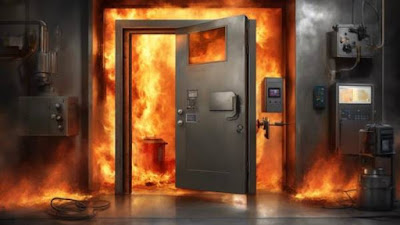A Comprehensive Guide from Leading Manufacturers
Importance of Compliance with NFPA Standards
NFPA compliance is not a marketing badge- it is the contract between a door and the worst moment you pray never arrives. Regulations like NFPA 80 spell out how the hardware, the frame, and the panel itself must behave from the first spark to the last orderly exit. A manufacturer that checks those boxes is handing you more than paperwork; they are giving the legal protection that auditors and courts will look for tomorrow. Meeting the code simply lowers the odds; doing it with integrity keeps people safe when luck runs out.
Why Certification Matters for Fire Doors
A fire door that carries a formal certification has already survived the worst kind of trial-by-fire. Independent laboratories, not the manufacturer, expose the door to heat, smoke, and pressure, then record exactly how long it holds up. Those controlled tests create the stamp of approval that proves the door meets its promised fire-resistance rating. When building owners lean on that stamp, they are not guessing; they know the product has met national safety codes and that, if disaster strikes, the door will do its one vital job.
Applications of Fire Doors in Commercial and Industrial Settings
Common Applications in Commercial Buildings
Fire doors occupy a non-negotiable role in offices, hospitals, universities, and even large shopping centres. When properly deployed, they compartmentalize heat and smoke, buying time for people to evacuate and for firefighters to arrive. High-rise towers, for example, almost always line their stairwells and corridors with steel-framed smoke doors so escape routes remain tenable until the last possible moment. Retail outlets, in contrast, use them to seal off stockrooms, thereby protecting customers on the floor from fumes or flame.
Such measures not only meet local and national fire codes, but they also represent a straightforward investment in human safety and property preservation.
Fire Door Options for Industrial Sites
Manufacturing floors, shipping warehouses, even power-generating plants see plenty of sparks and fumes, so a serious fire plate isn’t a luxury; it’s routine. Heavy gear sits alongside pallets of flammable stock, and that mix boosts the odds of an emergency erupting. Robust industrial doors step into the breach. The panels are built to shrug off intense heat for hours, giving people time to clear and allowing firefighters a fighting chance. Strategically hung between shop lines, bulk-storage bays, and chemical holds, the doors carve out safety zones that protect both workers and mission-critical machines. In short, they sit at the heart of any sensible risk plan and keep operations on an even keel when the smoke starts.















![[dok. Humas PT PP Properti Tbk]](https://infoaceh.net/wp-content/uploads/2025/06/679334e941763-fasilitas-lengkap-pp-properti-hadirkan-hunian-student-residence-di-margonda-depok_665-250x144.jpeg)






















